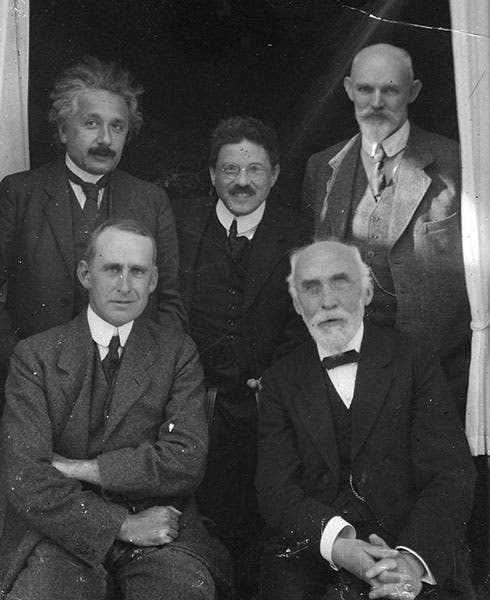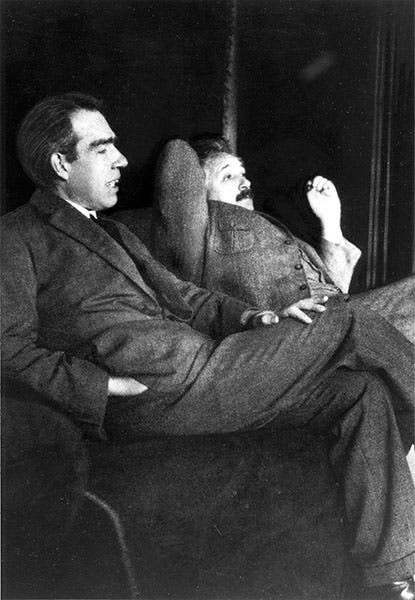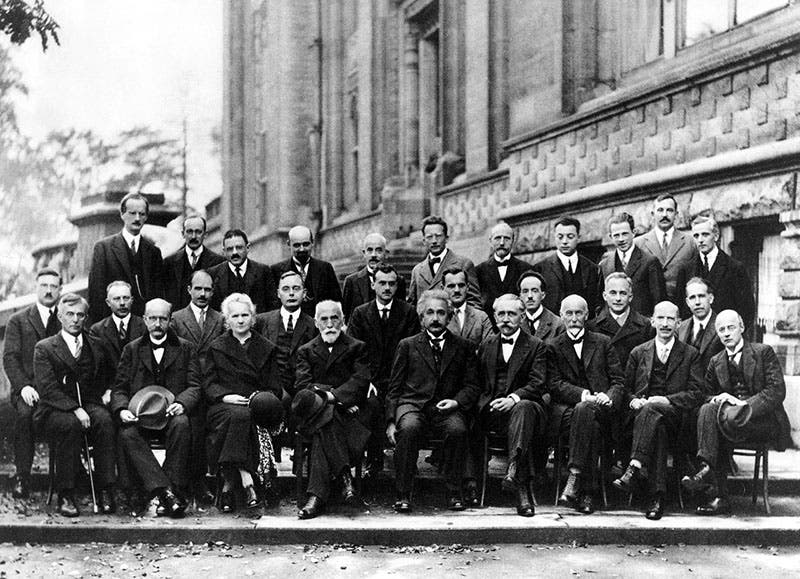Scientist of the Day - Paul Ehrenfest
Paul Ehrenfest, an Austrian-Dutch physicist, was born Jan. 18, 1880. He learned statistical mechanics in Vienna from the father of the field, Ludwig Boltzmann, who was the first to explain the second law of thermodynamics (the one that says that systems tend to move from order to disorder) as a result of the random behavior of molecules. Unfortunately for Ehrenfest, Boltzmann, now an older and less productive physicist, grew depressed and committed suicide in 1906. Ehrenfest moved on to study at several other German universities, such as Berlin and Göttingen. In Prague, in 1912, he met Albert Einstein, and the two unorthodox Jews took an immediate liking to one another, beginning a friendship that would last a lifetime, at least for Ehrenfest. That same year, the dean of physics in Leiden, Hendrik Lorentz, resigned as chair of theoretical physics (although he stayed on ate the university), and Einstein wrote a strong letter in support of Ehrenfest to replace Lorentz, calling him the finest lecturer he had ever heard, able to make difficult subjects clear with ingeniously chosen examples. Ehrenfest was offered the job, and he gladly accepted, since he was having difficulty finding a position elsewhere, since his religion tended toward atheism. He would remain at Leiden for the rest of his career.
In 1919, in Copenhagen, Ehrenfest met Niels Bohr, who had applied quantum theory to the atom just 6 years earlier. Bohr was extremely impressed with Ehrenfest, and the two soon became friends. Both Bohr and Einstein often visited Leiden and stayed in Ehrenfest's house when they did so. In 1925, the University celebrated the 50th anniversary of Hendrik Lorenz's doctorate, and Ehrenfest invited both Bohr and Einstein to come for the event and stay with him. Bohr and Einstein were at odds over the quantum theory, Einstein unable to accept the notion that "God plays dice" with the universe, as it was often phrased. While staying with Ehrenfest in 1925, they debated the matter endlessly, and Ehrenfest took a memorable photograph of the two in thoughtful discussion, a photo that is now iconic in the history of 20th-century physics (third image, below). Indeed, we have used it before, in our post on Bohr.
Ehrenfest's forte was applying statistical mechanics to quantum physics, and apparently, he was very good at it. Even better, he could explain this difficult subject to others with great clarity. He was often included in photographs of the giants of physics, as we see in the ones reproduced here (first and second images). However, in the mid 1920's, quantum physics became stranger and stranger, as Louis de Broglie in 1924 discovered that not only do waves often behave like particles, as with the photon, but particles, such as electrons, exhibit wave-like properties. Erwin Schrödinger in 1926 found a way to describe the behavior of a hydrogen atom with an equation that treated the entire atom as a set of waves. And Werner Heisenberg in 1927 determined that one could never know both the exact position and the velocity of a particle - there was a built in "uncertainty" in nature that limits what we can meaure. Ehrenfest found it increasingly difficult to understand the turn physics was taking, and unable to contribute the way he used to. When the fifth Solvay Conference convened in 1927, a meeting devoted to quantum mechanics, a group photo was taken, as had become customary since the first conference in 1911 (see our post on Ernest Solvay). Those participants considered the most important were seated in the front center, and lesser lights radiated out from there. For the 1927 photograph, Einstein, Marie Curie, Max Planck, and Lorentz were seated in the front row (fourth image, below). Ehrenfest was positioned in the back row at left. Granted, Schrödinger, Heisenberg, and Wolfgang Pauli were also in the back row, on the right. But Heisenberg and Pauli were twenty years younger, eager young pups on the way up. Ehrenfest was Einstein's age, and apparently on the way out. I do not know if Ehrenfest ever commented on his place in the 1927 photo, but we do know that he felt the loss of his creative powers keenly, since he expressed it later in letters to friends.
Bohr’s Institute of Theoretical Physics in Copenhagen held its own select conferences, beginning in the late twenties, where the likes of Pauli, Heisenberg, Bohr, Lev Landau, and George Gamow met and discussed the latest twists in a twisted quantum world. At the meeting in 1932, the participants staged a play titled Faust: Eine Historie, since it was the 100th anniversary of Goethe’s Faust. Bohr, naturally, played The Lord; Pauli was Mephisto, and Ehrenfest was Faust. We don’t know who wrote the play, or illustrated it, but Gamow reproduced the entire play as an appendix to his Thirty Years That Shook Physics (1966); the drawing of Faust’s (Ehrenfest’s) Study” that we reproduce here (fifth image) is from Gamow’s book. Pauli tries to convince Ehrenfest of the existence of his newly proposed chargeless, weightless particle (now called the neutrino). Ehrenfest is a hard sell, and at one point, his character says: “Old age is a cold fever that every physicist suffers with! When one is past thirty, he is as good as dead!”

In hindsight, that utterance is agonizingly ominous. That same year, Ehrenfest wrote a letter to Einstein and Bohr and others, a letter that he never sent, expressing his extreme depression: “In recent years it has become ever more difficult for me to follow the developments with understanding. After trying, ever more enervated and torn, I have finally given up in DESPERATION. … I have no other ‘practical’ possibility than suicide.” The next year, on Sep 25, 1933, he went to the institute that housed his son, afflicted with Down’s syndrome, shot and killed his son, and then killed himself. It was an unthinkable end to the life and career of the man who had once been called “the conscience of physics.”
Dr. William B. Ashworth, Jr., Consultant for the History of Science, Linda Hall Library and Associate Professor emeritus, Department of History, University of Missouri-Kansas City. Comments or corrections are welcome; please direct to ashworthw@umkc.edu.









